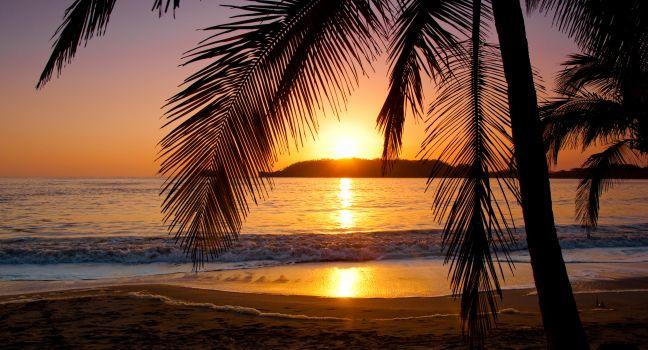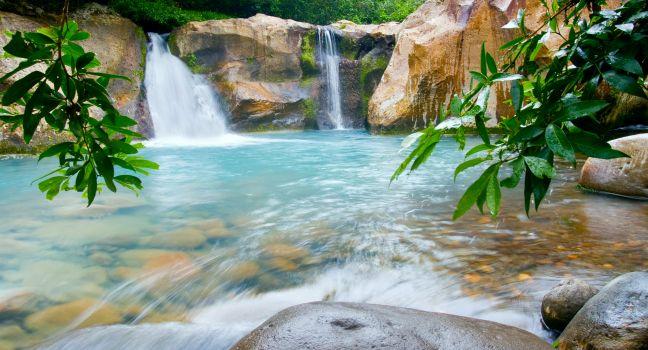Costa Rica's smallest park packs in an assortment of natural attractions, from wildlife sheltered by rain forest to rocky coves teeming with marine life. Meandering trails framed by guácimo colorado, mangrove, and silk-cotton trees serve as refuge to sloths, iguanas, agoutis, coatis, raccoons, monkeys, and birds. This is one of the country's best places to see squirrel monkeys and white-faced capuchin monkeys. The great diversity of wildlife is easily spotted from the well-maintained trails, and because the animals are so used to humans, you're likely to see them up close, especially near groups of tourists eating lunch at the beach. Security guards now inspect bags at the park entrance as new restrictions allow visitors to bring only fruit, sandwiches, and nonalcoholic beverages. The mass amounts of junk food stolen and consumed by wildlife has led to serious health problems for the animals. As tempting as it may be, do not feed the wildlife.
Just beyond the entrance, the park's main trail leads to Playa Manuel Antonio, with white sand and submerged volcanic rock great for snorkeling. A second trail winds through the rain forest and spills onto Playa Espadilla Sur, the park's longest beach, which is often less crowded due to rough waters. Farther east, Playa Escondido (Hidden Beach) is rocky and secluded, but not open to the public due to safety precautions; however, you can view it from afar.
Despite its size, Manuel Antonio is Costa Rica's most-visited national park before Poás Volcano. A few tips to make the most of a visit:
Park entrance tickets are sold exclusively at Coopealianza offices in Quepos and Manuel Antonio, one of which is located 50 meters (164 feet) before the park entrance. Tickets are valid for one year from date of purchase, for a single visit. Hire a private guide with ICT certification issued by the Costa Rica Tourism Board.
Arrive as early as possible—between 7 and 8 am is the best time to see animals (and it's cooler, too). Keep in mind the park closes at 3 pm.
Beware of manzanillo trees (indicated by warning signs)—their leaves, bark, and applelike fruit secrete a gooey substance that irritates the skin.
It's common for noncertified guides to approach tourists and offer their services. Even if you ask to see identification, they might show only a Costa Rican ID or a driver's license. Make sure that you hire only a guide that has a badge reading "ICT" with a valid expiration date. Noncertified guides often charge as much as ICT-approved guides, but tours last only an hour to 90 minutes (as opposed to three hours), and you won't see a fraction of the wildlife you might with an experienced guide.
For more information, see the highlighted listing in this chapter.





